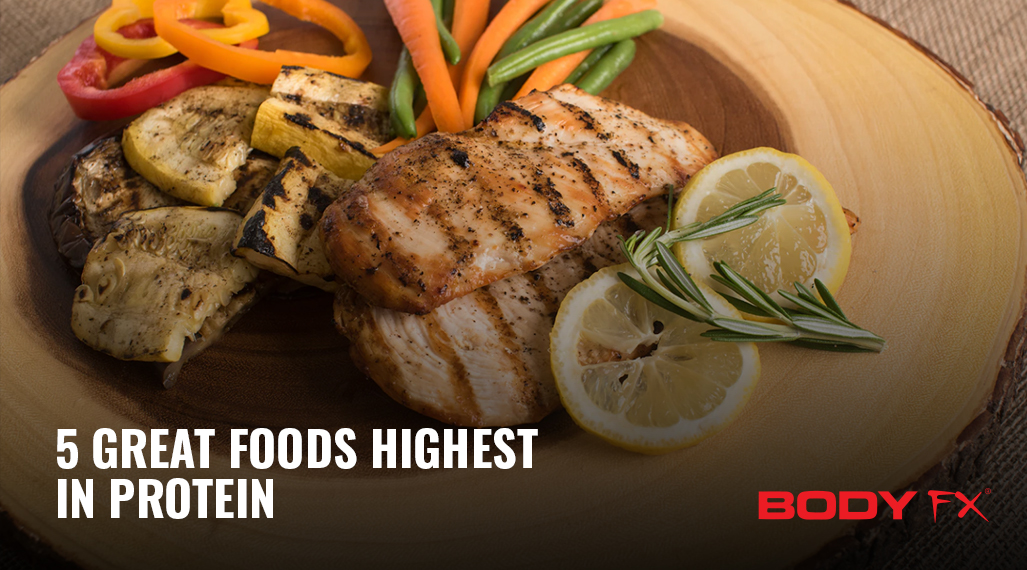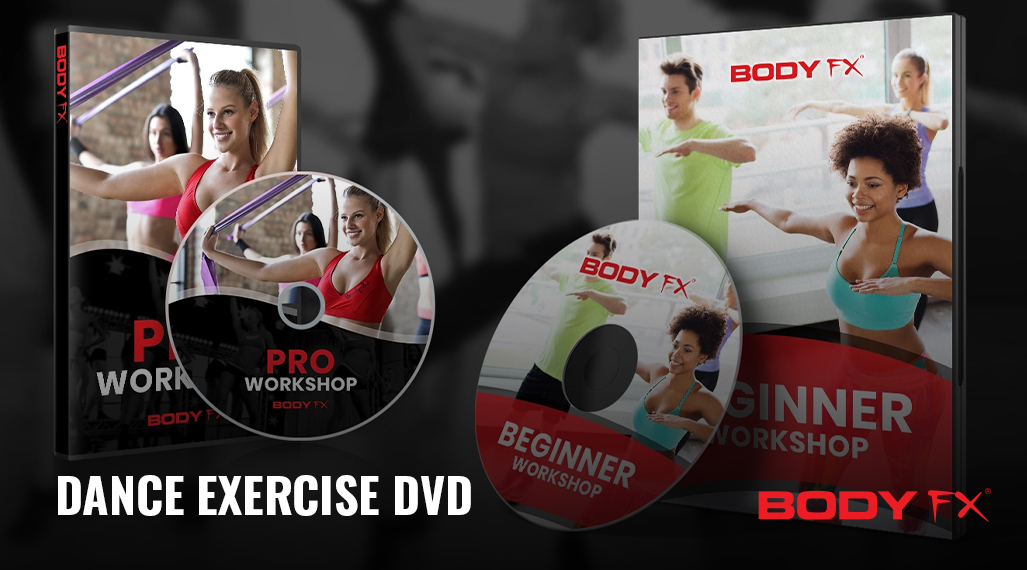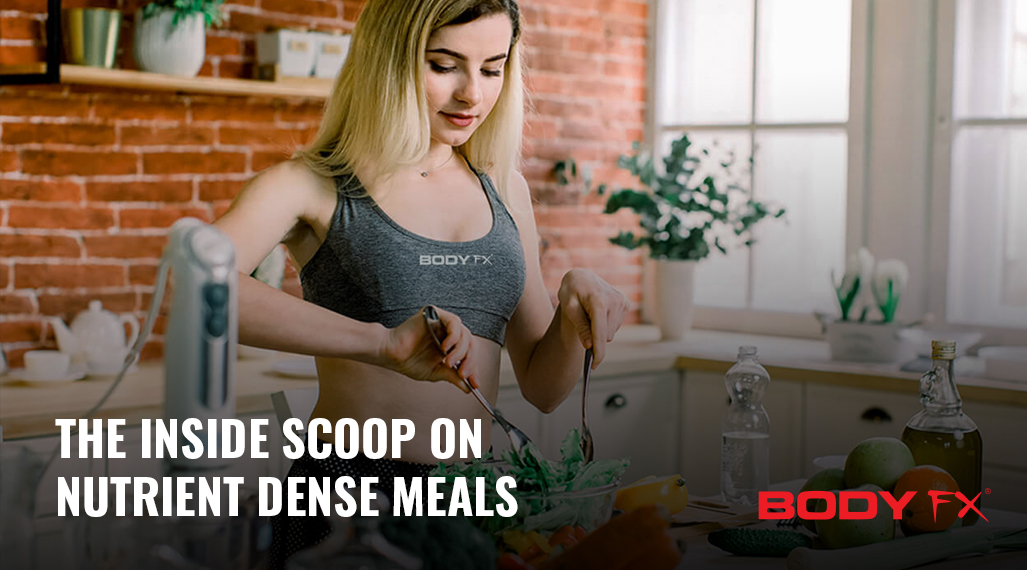Protein is widely regarded as the holy grail of health and fitness, and the most talked-about macronutrient of the bunch.
It doesn’t matter whether you’re training to be the next bodybuilding champ or you just want to lose a few inches on the waistline for summer – protein is your best friend for any fitness goal.
Let’s examine 5 of the best protein-packed foods that will keep you energized, taste good, and amplify your results.
Why Do We Need Protein
We hear so much about the importance of protein, but not many of us know the scientific reason it’s such a key part of a healthy, fitness-focused diet.
Protein is considered the building block of the human body and is the key component in developing our muscles, organs, tendons, and joints. It even helps us maintain healthy skin, hair, and nails, so be sure to eat your fair share.
Doctors recommend that we eat around 0.8 grams of protein per pound of body weight, but super-active folks can round that number up to a gram per pound to make the math easier.
Yes, that seems like a lot of protein, but once you realize how much of our diets are composed of starches and fats, you’ll realize why so much of the population is unhealthy!
With a bit of planning and prep skills, you can make protein the star of the show at each meal and get on track with your fitness goals.
1. Chicken
Watch any fitness meal prep video or bodybuilding documentary and you’ll see a major recurring character in each episode: lean chicken breast.
In each piece of skinless roasted chicken breast, we find over 50 grams of protein, which accounts for 75% of its total calories. That means you aren’t consuming excessive amounts of fat and virtually zero carbohydrates.
The beauty of chicken breast is the sheer variety of ways in which it can be prepared. Boiled, grilled, roasted, or pan-fried, it’s all good. You don’t need much butter or oil to get things cooking, and it can be prepared in big batches that you can freeze.
Fill your pantry with seasonings, spices, and herbs to make your chicken breast taste better than ever, and don’t be afraid to pick up some chicken thighs if you require some extra calories from fat.
2. Beef
Red meat may get a bad rap in some fitness circles due to its higher levels of cholesterol and fat, but you can easily find lean beef containing tons of quality protein and key micronutrients.
A single 3oz serving of 85% lean beef will contain 22 grams of protein and around 11 grams of fat, which is not the worst ratio in the world. Look for leaner beef if you’re really trying to cut the fat, or indulge in more marbled cuts if you are feeling indulgent.
On top of those macros, you get a ton of zinc, magnesium, iron, and vitamins with each serving. Look for grass-fed beef (as opposed to corn-fed) to access the best micronutrient profiles.
Since beef is usually associated with other junky foods like fries, cheese, ketchup, and burger buns, we often forget that this protein source can be highly effective on its own.
Try out some lean cuts on the grill with light seasoning and some roasted veggies to get a complete meal without the guilt. It’s not something to be consumed every day but can definitely make an appearance on your plate a couple of times a week.
3. Fish
Lots of us have love/hate relationships with fish, but there’s no denying it is one of the healthiest and affordable sources of protein available on the market.
Tuna, for example, is 84% pure protein and has the added benefits of Omega-3 fatty acids and a low price point. Level up to cod, bass, tilapia, swordfish, and salmon to get even more quality micronutrients and a range of flavor profiles and textures.
Depending on where you live, fish can be even cheaper than chicken or beef and can be cooked with a wide array of techniques involving veggies, noodles, and sauces for a complete meal.
With enough flavor layered on top, you are guaranteed to find something to like about this protein, and the health benefits can’t be understated.
The next time you’re at a big-box retailer, pick up some frozen fish filets and roast them up on a night that you need a quick protein-packed meal. You won’t regret it!
4. Eggs
Once you wrap your head around the weirdness of eating unfertilized chicken eggs, you can fully enjoy this complete protein source on a daily basis using tons of different recipes.
In every egg, you find 75 calories, 7 grams of protein, 6 grams of fat, and less than one gram of carbohydrates. Enjoy sunny side up, scramble or hard-boiled, or even add meat and veggies to an omelet for a complete, tasty meal.
Make sure you are never without at least a dozen eggs in your fridge, and your fitness journey will be that much easier in the long run.
5. Protein Powder
If you’re on a tight schedule or strict budget, protein powder is going to be one of your greatest allies in losing weight, building muscle, or attaining any other fitness goal.
Most retail protein powders are made from whey, which is the pure protein material separated from cows milk and dehydrated into a solid powder form.
The whey is often fortified with additional micronutrients and branch-chain amino acids, and infused with tasty flavors.
If you are a Vegan, you may also be aware of Vegan protein powders that isolate the protein from peas, soy or even hemp. Vegan protein powders that contain protein derived from pea protein or almond seed protein sources are good options.
The primary appeal of protein powder is convenience. You can blend up a quick shake with water or milk in a plastic shaker cup and slam down 20 grams of protein on the go. Most powders contain barely any extra carbs or fat, making them a great diet supplement.
Keep in mind, however, that these powders are, in fact, supplements, and should not be substituted for real food too frequently.
With that said, you should absolutely have a jug of quality protein powder in your kitchen at all times to supplement your meal plan and get a quick boost of protein after a workout.
Honorable Mentions
With the big five out of the way, let’s touch on some lesser-known foods that still pack a ton of protein in each bite.
For the vegan crowd, you can’t overlook the power of nuts, including almonds, pistachios, and cashews. On average, these nuts contain around 5 grams of solid protein in each handful, give or take a gram or two. They are tasty, require no preparation, and make for a great snack.
Just don’t get carried away with nuts, since they tend to be higher in fat and are sometimes coated in sugary and salty seasonings. Opt for the roasted, organic, low-salt varieties if you want to make them a part of your routine.
If your stomach can handle dairy, make sure you include cottage cheese and Greek yogurt on your grocery list. These are low-fat, slow-digesting protein sources that taste great mixed with a bit of fruit or seasoning, like cinnamon, making for a great dessert substitute.
Conclusion
If you haven’t been conscientious about your protein intake, it can be a challenge to make sure you get the daily recommended average, especially since it demands some planning and prep.
But with these five amazing protein sources (plus some extras) you’ll be surprised how easy it is to put protein at the center of your diet.
It can be done easily and affordably once you get the hang of it, and you will quickly see results!








